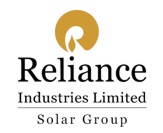

Registration
Exhibition
Upload Abstracts
Faqs
Solar Cells +
Emerging Technology
Solar Industry in India
| Important Dates |
| Abstract Submission: |
| 15 Nov 2009 |
| Abstract Acceptance: |
| 25 Nov 2009 |
| Paper Submission: |
| 10 Dec 2009 |
| Symposium Date: |
| 13 Jan 2010 |
| Conclave Dates: |
| 8-15 Jan 2010 |
 |
|
Photovoltaic, or PV for short, is a solar power technology that uses solar cells or solar photovoltaic arrays to convert light directly into electricity. Solar cells produce direct current (DC) electricity from light, which can either be used directly or through batteries to power equipments. Though the photovoltaic effect was first observed in 1839 by Alexandre-Edmond Becquerel, the first modern solar cell was patented by Russel Ohl in 1946. In 1954 Bell Laboratories found that silicon doped with certain impurities was very sensitive to light. This signaled the start of the modern age of solar power technology. The first practical application of photovoltaics was to power orbiting satellites and other spacecraft and pocket calculators, but today the majority of photovoltaic modules are used for grid connected power generation. In this case an inverter is required to convert the DC to AC. There is a smaller market for off grid power for remote dwellings, roadside lamp posts, emergency telephones, remote sensing, and cathodic protection of pipelines. The most important issue with solar panels is capital cost (installation and materials). Because of much increased demand, the price of silicon has risen and shortages occurred in 2005 and 2006. Newer alternatives to standard crystalline silicon modules includes casting wafers instead of sawing , thin film (CdTe, CIGS, amorphous Si, microcrystalline Si), concentrator modules, 'Sliver' cells, and continuous printing processes. Due to economies of scale solar panels get less costly as people use and buy more — as manufacturers increase production to meet demand, the cost and price is expected to drop in the years to come. There are many materials and structures used in manufacturing of solar cells so as to increase their efficiency. Following solar cell configurations have been used to increase the conversion efficiency: 1. Back Surface Field: In this the front surface is made in the normal way, but the back of the cell, instead of containing just a metallic ohmic contact, has a very heavily doped region adjacent to the contact. 2. Violet Cell: The violet cell is fabricated with reduced surface doping concentration and smaller junction depth. The combination of higher lifetime near the surface and narrower junction greatly improves the response at high photon energies. 3. Textured Cell: The textured cell has pyramidal surfaces produced by anisotropical etching of <100>-oriented Si surface. The incident light on the side of a pyramid gets reflected onto another pyramid instead of getting reflected. Thus the reflection of incident light is reduced and efficiency increases. 4. Vertical Junction Solar Cell: It has both the junction and metallization perpendicular to the cell surface. The diffusion and metal contacts are embedded in deeply etched grooves normal to the surface, formed by anisotropic etching of <100> Si. 5. Heterojunction Solar Cell: the solar cells are made by using semiconductors of different bandgaps. The higher bandgap material is placed on the front and the lower bandgap material at the back of the cell. 6. Thin Film Solar Cell: The active semiconductor layers poly crystalline or disordered films that have been deposited or formed on electrically active or passive substrates. 7. Optical Concentrator: Sunlight is focused, using mirrors and lenses, on a solar cell so as to achieve higher efficiency. As the incident power increases from 1 SUN to 1000 SUNS the short circuit current increases linearly along with open circuit voltage and thus the efficiency. Based on different technologies and materials, the solar cells can also be grouped into 4 different generations: First generation photovoltaic cell: The cell consists of a large-area, single-crystal, single layer p-n junction diode, capable of generating usable electrical energy from light sources with the wavelengths of sunlight. The cells are typically made using a diffusion process with silicon wafers. These silicon wafer-based solar cells are the dominant technology in the commercial production of solar cells, accounting for more than 86% of the terrestrial solar cell market. Second generation photovoltaic cell: These cells are based on the use of thin epitaxial deposits of semiconductors on lattice-matched wafers. There are two classes of epitaxial photovoltaics - space and terrestrial. Space cells typically have higher AM0 efficiencies (28-30%) in production, but have a higher cost per watt. Their thin-film cousins have been developed using lower-cost processes, but have lower AM0 efficiencies (7-9%) in production. There are currently a number of technologies/semiconductor materials under investigation or in mass production. Examples include amorphous silicon, polycrystalline silicon, micro-crystalline silicon, cadmium telluride, copper indium selenide/sulfide. An advantage of thin-film technology theoretically results in reduced mass so it allows fitting panels on light or flexible materials, even textiles. Second generation solar cells now comprise a small segment of the terrestrial photovoltaic market, and approximately 90% of the space market. Third-generation photovoltaics cell: They are proposed to be very different from the previous semiconductor devices as they do not rely on a traditional p-n junction to separate photogenerated charge carriers. For space applications quantum well devices (quantum dots, quantum ropes, etc.) and devices incorporating carbon nanotubes are being studied - with a potential for up to 45% AM0 production efficiency. For terrestrial applications, these new devices include photoelectrochemical cells, polymer solar cells, nanocrystal solar cells, Dye-sensitized solar cells and are still in the research phase. Fourth Generation Photovoltaic cell: This hypothetical generation of solar cells may consist of composite photovoltaic technology, in which polymers with nano particles can be mixed together to make a single multispectrum layer. Then the thin multispectrum layers can be stacked to make multispectrum solar cells more efficient and cheaper based on polymer solar cell and multijunction technology used by NASA on Mars missions. The layer that converts different types of light is first, then another layer for the light that passes and last is an infra-red spectrum layer for the cell—thus converting some of the heat for an overall solar cell composite. Solar cells just got a boost in efficiency thanks to a couple of scientists at the University of Delaware. The new cells can convert 42.8% of the light that strikes them into electricity, which is a step up from the previous record of 40.7%. The cells do this by splitting light into high energy, low energy, and medium energy chunks. The light is then directed to different materials depending on what type it is, eeking electrons out of it. DARPA is pushing for a goal of 50% efficiency, which would go a long way towards making solar power a more practical alternative energy source. |
|
Sponsors
|



